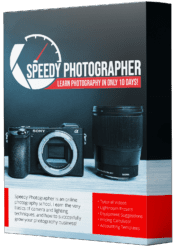When to Use +100 Clarity, Texture, and Dehaze in Lightroom?
A common mistake in Lightroom is cranking the clarity slider up to +100 when texture or dehaze would be a better choice.
This video breaks down all three settings and explains when and why you should use each one!
To join Speedy Photographer or watch my FREE training:
https://www.speedyphotographer.com
Follow me on Instagram:
https://www.instagram.com/kevinraposo
https://www.instagram.com/speedyphotographer
Shortened Transcript
In this video, I’ll explain how and when you should use the texture, clarity, and dehaze sliders in Lightroom.
A common mistake is cranking clarity to +100 without understanding how it affects the look of the picture or knowing when texture and dehaze are a better choice.
All three of these sliders make specific but slightly different adjustments to the contrast of your image based on something called frequency.
To help you understand frequency, have a look at this picture of a plane wing I took on a red eye flight to Portugal.
The upper half of this image has a low frequency. The color and brightness of the sky and the plane wing is consistent, and there are only a few sharp edges.
The bottom half of the image has a high frequency. The color is pretty consistent, but the clouds have many sharp edges and changes in brightness.
And the texture slider focuses on adding contrast to the high frequency areas of your image. If I crank my texture up to +100, you can the clouds become much more defined, but the sky, the plane wing, and the overall color of the image only changes slightly. If I bring texture down to -100, the clouds essentially turn into a blur, but the edges of the plane wing – which are low frequency – are still sharply defined.
On the other hand, the clarity slider focuses on adding contrast to the midtones. When I crank my clarity up to +100, contrast is added to the clouds and the plane wing, but the sky is pretty much the same because most of it falls in the highlights. And again, if I bring clarity down to -100, both the clouds and the plane wing becomes blurry.
So the key to understanding the difference between texture and clarity is to look at the plane wing. The plane wing has a low frequency and specifically falls in the midtones. So, the texture tool has much less of an effect on it than the clarity tool. If I crank both sliders down to -100, the edges of the plane wing are still clearly defined with the texture slider, but they become a blurry mess with the clarity tool.
Lastly, we have the dehaze slider, which is meant to be used for restoring color and contrast to a washed-out picture. And because I shot this picture through a plane window, this tool is perfect here. If I increase dehaze to about +30, most of the contrast and saturation in the midtones and highlights will be restored to the picture.
The trick with the dehaze slider is to only make slight adjustments. If I crank it up to +100, the color begins to look completely unrealistic and amateur. If you need to restore more contrast, look at your histogram and adjust your blacks or whites instead.
The texture tool mostly comes in handy when I shoot portraits. If the person has wrinkles on their face, it does a much better job of softening them than clarity does. This is because the wrinkles are high-frequency, so the texture tool can remove them without reducing the contrast of my lighting.
It also comes in handy when I want to emphasize those wrinkles. For example, I cranked up the texture in this picture to draw more attention to the skin of the animal. If I tried to do the same thing with clarity, it would affect almost every area of the image, because all of it falls in the midtones.
Now the clarity tool comes in handy when I want to create a more dramatic or tougher look to my picture. In this image, I wanted the athlete to look more intense, so I brought up my clarity which increased the contrast of the lighting on their face.
And in this picture, which was taken on an ATV Tour in Costa Rica, I really wanted to bring out the tough terrain, so I cranked up my clarity and reduced the vibrance to bring out that aspect of the image.
Finally, the dehaze tool is useful when shooting underwater, through a pane of glass, or when dealing with strong reflections. For example, I took this picture at a hockey game, and while I did my best to press the camera lens against the glass, the dehaze tool helped restore contrast and color to some of the washed-out areas of the image.
So hopefully, this clears up exactly what each of these tools do.
Don’t forget to click that subscribe button coming up in a second, and if you want another hour of free training, head over to speedyphotographer.com.




Leave a Reply
Want to join the discussion?Feel free to contribute!